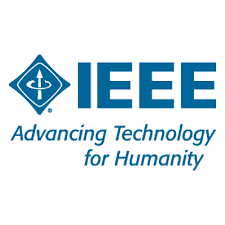New Standard Brings High-Speed Ethernet to Automotive Applications
Recent approval of the IEEE 802.3bp standard offers efficiencies for reducing the weight and cost of interconnections to support communication among an ever-growing roster of automotive subsystems.
 While advanced driver assistance systems (ADAS) and infotainment systems have been touted to automotive consumers for quite some time, automotive electronic engineers have been saddled with adapting older communications technologies to handle the demands of new functionalities. Now, adoption of a new Institute of Electrical and Electronics Engineers (IEEE) standard geared toward the demands of automotive environments supports game-changing opportunities for delivering new system capabilities through more streamlined electrical harnesses that reduce cost and weight.
While advanced driver assistance systems (ADAS) and infotainment systems have been touted to automotive consumers for quite some time, automotive electronic engineers have been saddled with adapting older communications technologies to handle the demands of new functionalities. Now, adoption of a new Institute of Electrical and Electronics Engineers (IEEE) standard geared toward the demands of automotive environments supports game-changing opportunities for delivering new system capabilities through more streamlined electrical harnesses that reduce cost and weight.
The new standard – IEEE 802.3bp-2016 1000BASE-T1, designed to support 1Gb/s communications via single twisted-pair cables – was approved on June 30 by the IEEE Standards Association (IEEE-SA) Standards Board. The standard, scheduled for publication in mid-September, addresses physical-layer specifications and management parameters for 1Gb/s communication via single twisted-pair copper cable.
Addressing Physical Demands in a Demanding Environment
“This new level of performance is one to two orders of magnitude faster than legacy automotive communications buses and allows for creation of a true IP-based network,” says Steven B. Carlson, president of High Speed Design, a Portland, Ore. consulting firm, who served as the chair of the IEEE P802.3bp 1000BASE-T1 PHY Task Force.
When asked about the most challenging technical aspects of developing the standard, Carlson says, “Honestly, the technical challenges were not as significant as 10GBASE-T PHYS operating at 2.5Gb/s per pair. It was the fast start-up times (<100ms) required by the application that provided the major challenges.”
Having to allow for a non-structured wiring plant required definition of an automotive link segment that defines the channel characteristics, but does not define the physical cable or connectors. This automotive link segment supports up to four inline connectors with unshielded balanced copper cabling spanning at least 15 meters.
Meeting Multiple Needs in One Compact System
Conventional automotive wiring harnesses typically represent the third heaviest and third most costly component in a car, exceeded by only the engine and chassis. The new standard will help automotive systems engineers accommodate a full spectrum of applications through more streamlined and less costly in-vehicle Ethernet networks.
Handling multiple subsystem signals through the shared wiring will enable automotive designers to eliminate discrete wiring harnesses for each subsystem, to reduce both cost and weight while accommodating an ever growing scope of functionality. Potential applications range from basic functions such as lighting, mechanical systems, and environmental control, to onboard infotainment systems, to sensor inputs and control outputs for critical ADAS systems.
While issues of timing, reliability, or redundancy are architectural issues outside the scope of the specific IEEE 802.3bp standard, the IEEE 802.1 standard does provide guidance in the areas of LAN architecture, security, and time-sensitive networking. This is important, because bandwidth and end-to-end latency requirements can vary widely among various automotive subsystems:
- Low bandwidth and 10-millisecond latency for non-critical systems such as seating, lighting, and heating/cooling
- 100Mb/s bandwidth requirements at less than one millisecond latency for camera-equipped driver-assistance and safety systems.
- Less than 10 μs latency for engine, powertrain, steering, and braking controls.
Physical Implementations Available for Development
Even before the final approval of the standard, automotive industry suppliers have been working on practical implementations for compliant technology. One example of that is the Marvell automotive Ethernet reference platform integrated with TE Connectivity’s MATEnet modular and scalable connectors. The new development platform will enable automotive systems developers to prototype and integrate 1Gb/s Ethernet solutions with high-definition, uncompressed video for automotive applications. Projected applications range from in-vehicle entertainment to ADAS systems to electronic control units (ECU).
The TE MATEnet modular and scalable connectors are based on miniaturized standard automotive connectors such as NanoMQS, Generation50, and MCON 0.50 series connectors. They are designed for harsh automotive environments and are compatible with twisted-pair, unshielded twisted-pair, and shielded twisted-pair cables.
New Options Create New Professional Opportunities as Well
Beyond the new physical functionality and associated cost and weight benefits, adoption of Ethernet solutions in automotive wiring designs can also create expanded professional opportunities within and beyond the automotive sector. Implementing the advanced electronic architectures will require top-to-bottom redesigns of automotive systems and sub-systems. Redesigns that are currently under development are expected to hit the market by the early 2020s.
Efforts to maximize the efficiencies of Ethernet designs in automotive applications can also open new career paths to others outside that industry. For example, systems designers who gained their Ethernet experience through IT networking and communications applications now have an opportunity to translate those skill sets to the automotive industry.
[hr]
Author Peter Antoniewicz is a veteran freelance writer who covers high-tech and business-to-business topics for a variety of corporate, agency, and editorial clients. He has written on subjects ranging from embedded computing, electronics, and software to ag-chem, medical imaging, engineered solutions, industrial products, and business services. Email him at [email protected].



